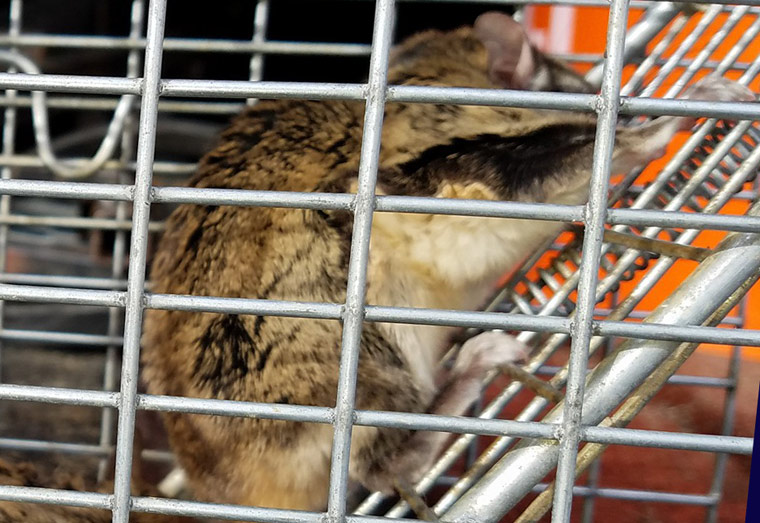- info@wildlife-removal.com
Call us for help in your town
Wildlife Removal Education
Ways to Tell if There is A Flying Squirrel in Your Attic
Need flying squirrel removal in your hometown? We service over 500 USA locations! Click here to hire us in your town and check prices - updated for year 2020.
One of the things that will give the game away when you have flying squirrels in your attic is the noise. This is what gets them confused a lot with bats too, as both critters are nocturnal (mostly), start flapping when the sun goes down, and stop flapping when the sun comes back up again. There is a very big difference between the two, however, and that is that bats can fly and flying squirrels (despite the name) cannot fly. They glide instead. The name is very misleading.

Other noises can give the game away too. You might hear chewing or gnawing sounds. Just like rats and mice, flying squirrels are actually rodents, and all rodents chew through vast quantities of material with ease. They can even chew through plasterboard and drywall, wood, plastics, and more. This actually makes life quite tough when it comes to trying to keep them out, sealing up all of the holes they once used to gain entrance.
This chewing action could actually have widespread repercussions too. If your lights seem to flicker bizarrely at night, there could be many reasons behind it, but one of those reasons might just be that rodents are chewing on the electrical cables that are embedded in the walls and floors. It’s a more common occurrence than you’d think. When you plug certain electrical items into the wall and they don’t work quite right, rodents might have chewed the wiring behind that socket too. In some really bad cases, the entire electrical system of a house may need to be rewired or reconfigured. Rodent damage could spread much further than many property owners give the little beasts credit for.
Of course, one problem that you’ll definitely face when you met with larger groups of animals, such as flying squirrels, is a rather nasty odor. It’ll smell musty, much like when you put your head close to a pet gerbil or hamster in a cage. It’s actually a good indication that you have a wild critter problem, and once you've had one invasion, there's a good chance that you’ll recognize that same smell for life.
Wild animals all come with their fair share of bad points, but the humble flying squirrel really can be quite the destructive little force when left to their own devices for long enough. You will rarely have just the one flying squirrel. They are highly sociable creatures, especially the Southern flying squirrel, and this means that family groups and friends won’t be far behind the one that you have seen.
Go back to the Flying Squirrel Removal page, or learn tips to do it yourself with my How to Get Rid of Flying Squirrels guide.


















